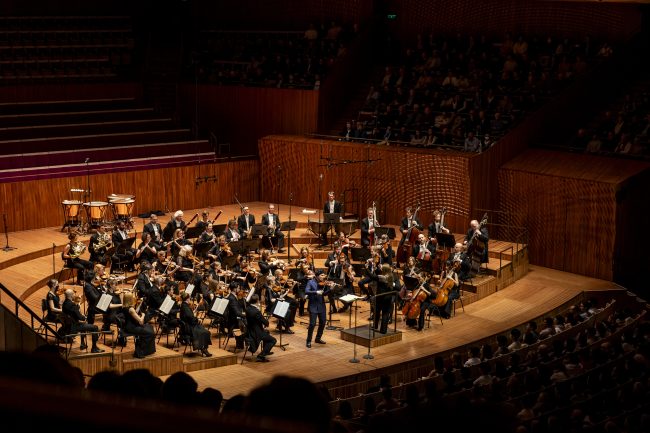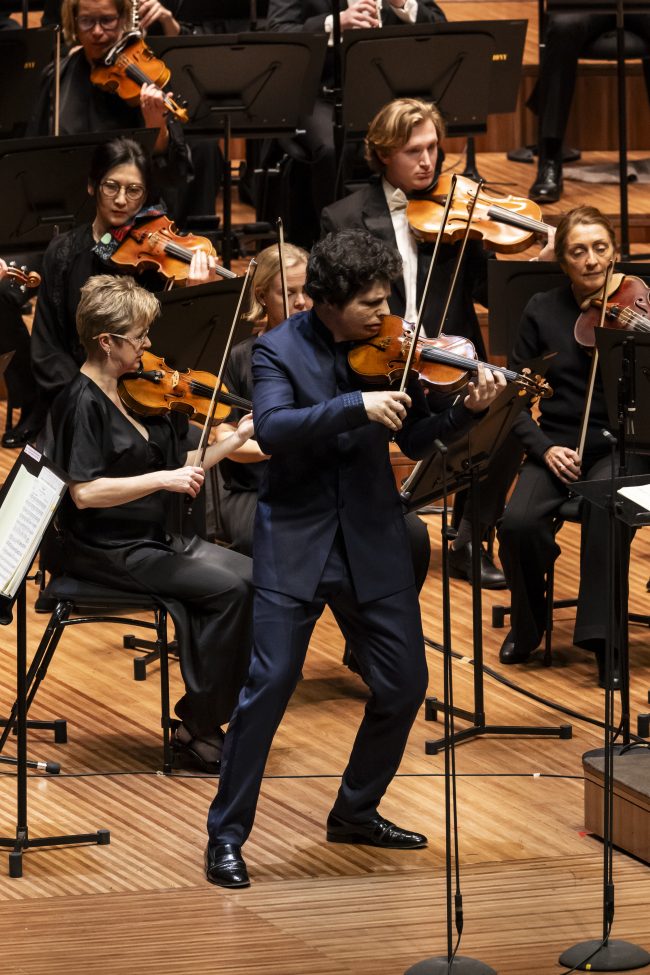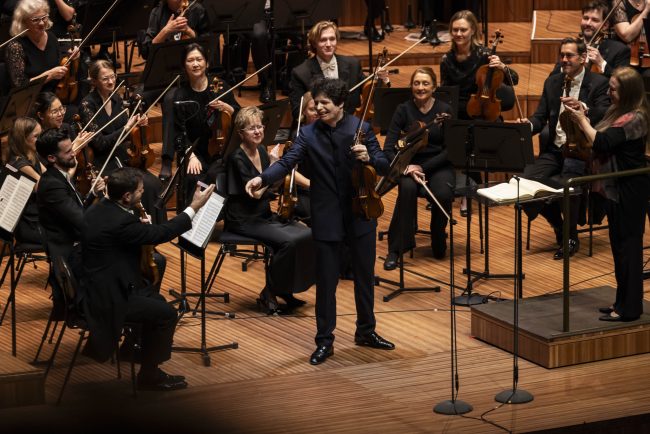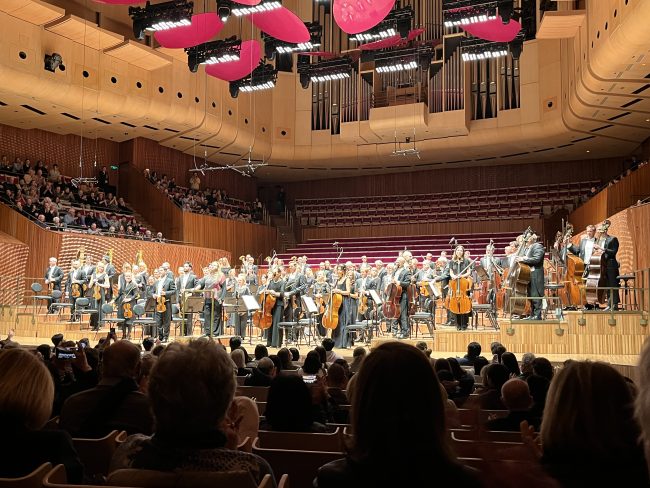Wednesday 7 August 2024
Review by Paul Neeson (Arts Wednesday)


Violinist Augustin Hadelich’s performance of the Mendelssohn Violin Concerto with the Sydney Symphony Orchestra was a virtuosic performance of great proportion, it took our appreciation of this much loved concerto to a new level. From the opening bars we heard a tone that was pure, sweet and melancholy all at once – virtuosity sublime. It’s hard not to wax lyrical, every single note, no matter how short or insignificant was crystal clear, even in the diabolically rapid passages. His high harmonics shone throughout the Concert Hall soaring above the lush orchestral colours that Chief Conductor Simone Young created with such knowledge, professionalism and discipline, extracting every emotion from the orchestra. We were already mesmerised, but when it came to the bridge into the 2nd theme, Hadelich held the note with such exquisite delicacy, prolonging the ecstasy for just that perfect extra moment, and then, audible sighs and swoons could be heard all around the hall.
The melodies of the slow middle movement were performed with intense passion, we felt like mere mortals in the presence of sublime greatness. This is why we love this concerto by one of the Romantic masters, Mendelssohn.
And so to the finale. By now, Augustin was in total control of the orchestra as he ramped up the excitement with ever increasing intensity and tempo. Maestro Young was right with him – pushing the orchestra to greater and greater heights – there was a symbiosis, a telepathy between soloist and conductor. A few of the winds momentarily lagged behind but a quick pointing of her baton and they were brought back on track.

The Concerto was composed in 1840 at a time when virtuosos were the rock-gods of their time. Women would swoon at concerts given by Franz Liszt and Niccolò Paganini, even keeping images of them in lockets around their necks and throwing flowers (not underwear) on to the stage as they performed remarkable musical feats. Even though no objects were thrown on to the stage in tonight’s performance, Hadelich nonetheless continues this tradition and spirit by receiving spontaneous thunderous applause and no less than four curtain calls begging for an encore.
And his encore? In a flash he was back on to the stage, building anticipation as he proceeded to retune his instrument and we were wondering how on earth can you follow on from such a breathtaking performance of one of the greatest Romantic pieces of classical music? Well, surprisingly, with a jolly good hoedown, suddenly his 1744 “Leduc / Szeryng” Guarneri del Gesu violin became a fiddle as he played his own arrangement of the American fiddle tune “Orange Blossom Special” originally composed by Ervin T. Rouse – marvellous!.

And so to the second half of the program. It is said that it can take a long time to come to Anton Bruckner’s music. While I have loved his sacred choral music for many years, I have struggled with his symphonies – until now. Last night Simone Young’s interpretation of his original 1887 version of Symphony No. 8 was an absolute revelation, an epiphany.
It is a monumental work requiring significant musical forces (90 musicians on stage) and at 80 minutes long, a lot of stamina. The Sydney Symphony was well up to the task with the indefatigable Young to guide them. She was after all the only person in the hall who stood through the entire symphony – where does she get the sustained stamina and energy – truly remarkable..
What I began to realise as the work unfolded is that it is made up of small thematic building blocks, that are layered and repeated to create mood, textures and dynamics. Many of these themes consist of 5 notes which allow for many combinations of rhythm and melody. Others are simply 6 note ascending or descending scales. Once that code is cracked you can hear Bruckner’s musical mind – and for some, genius – at work, and it was Young who provided the key to cracking the code with her thoughtful and powerful interpretation.
Simone Young is an internationally recognised specialist in the late romantic repertoire – think Wagner, Richard Strauss and Mahler. From these masters she has garnered an intricate sense of drama in the larger orchestral works, and that was on display throughout the four movements. As with the chromatic harmony of much of Bruckner’s works, the keys move constantly, shifting to unexpected keys providing an unsettled framework, keeping us always slightly on edge. While the symphony is nominally C minor, it is the veritable orgy of C major at the end of the 1st and 4th movements that we take away with us – resolution and joy.
I have to thank the Chief Conductor for making me a Bruckner symphony convert. I can’t wait to go back and revisit his other 8 symphonies with one of this world’s greatest conductors.
Listen to a recent interview with SSO Assistant Principal 2nd Violin Emma Jezek below: